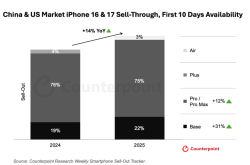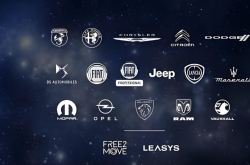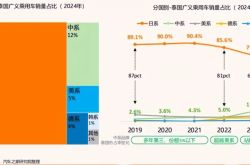China's SaaS: Navigating the AI Era
![]() 06/27 2025
06/27 2025
![]() 816
816

"The future is in the hands of Agents, and multi-Agent interaction will undoubtedly become the standard. Yet, before this vision unfolds, 'SaaS+AI' will serve as the transitional phase, as TO B services inherently involve industry knowledge, processes, permissions, security, and other crucial elements that cannot be overlooked. These constitute the core values."
Author | Dou Dou
Editor | Pi Ye
Produced by | Chanyejia
"Is the SaaS model being supplanted?" This question has frequently occupied my thoughts this year and is increasingly being debated within the industry," a founder of a domestic SaaS enterprise shared with Chanyejia.
His concern is not isolated. If, in the past two years, the notion that "the SaaS model won't dominate the AI era" was more of a forward-thinking commentary from investors and a reflection of Silicon Valley's actions, this year, two events have intensified the discussion.
In May of this year, the first general-purpose Agent Manus was released. While its lackluster performance on the consumer end sparked mixed reactions, its impact on the business end was profound. "As soon as Manus emerged, we began researching it. We even started redesigning numerous delivery processes, capabilities, and result interfaces within our software," another CRM enterprise founder revealed.
Not only him but also within a SaaS enterprise focused on data insights, Manus is viewed as a symbolic step towards AI TO B. "This signifies that AI is beginning to genuinely possess the ability to solve problems and deliver outcomes through thoughtful planning," said this enterprise, which has undergone a series of architectural adjustments over the past couple of years. The advent of Manus has provided greater assurance to this architectural transformation.
Apart from Manus, another catalyst for this discussion was the 'Consensus Report' from Sequoia China's internal sharing session. At this event, attended by participants from Microsoft, OpenAI, and other enterprises, 'delivering outcomes' emerged as a new consensus among everyone regarding product delivery standards in the AI era.
In contrast, within the domestic SaaS sector, over the past several years, whether it's CRM, ERP, industrial software, or other sectors, service providers have struggled to achieve comprehensive outcome delivery while balancing standardization and 'customized delivery'.
How should SaaS enterprises adapt? Or, is the SaaS delivery model still valid in the AI era? And what is the precise integration model of Agents and SaaS?
"SaaS is now reverting to its fundamental concept. It's not a software form but a delivery form," an investor shared with us.
Challenges and opportunities coexist. China's SaaS is entering the AI era.
I. Two Paths Emerge in the AI Wave of SaaS
In fact, from a practical standpoint, China's SaaS enterprises have already taken some proactive measures.
From a path perspective, the overall strategies can be divided into two categories: one is to build Agent PaaS based on PaaS logic, specifically by integrating AI into existing products, isolating Agent capabilities, and integrating them more deeply into the inherent software interface. This approach ensures that SaaS service providers maintain their current business models and better meet customers' current AI needs.
Among them, some SaaS vendors prioritize scenarios with high commercial value and clear needs, such as marketing, sales, data, customer service, etc. The advantage of this path is its quick results and precise resource allocation, avoiding the waste of resources from comprehensive transformation.
From an AI value perspective, the characteristics of this path align with the varying degrees of maturity and data quality across different sales scenarios. Utilizing AI to lead the implementation in scenarios with relatively abundant and high-quality data can not only genuinely satisfy the sticky needs of the existing customer base but also provide technical support for penetrating into larger customers. This approach balances short-term commercial returns with the construction of long-term technical barriers.
The future outlook for this path is also clearer. For instance, in communications with numerous SaaS enterprises, many have informed Chanyejia that one development is that Agents also require personalized customization. Based on this, 'Agent PaaS' is already in preparation, and the underlying modular capabilities are continuously accumulating, transitioning from general scenario modules to industry-specific scenario modules.
In terms of deployment numbers, this is currently the mainstream approach adopted by domestic SaaS enterprises, such as Salesforce, Zoho, NetEase Wisdom, etc.
The second path is to create end-to-end Agent products. The so-called end-to-end implies that the new Agent products are not interconnected with the inherent software. Beyond the existing service products, the new products are oriented towards new scenarios and feature new commercial pricing, exemplified by products from Beisen and Kingdee.
Taking the 'AI Interviewer' and other products launched by numerous vendors as an example, unlike the path of integrating AI with existing products, the AI Interviewer is an AI Agent independent of the original product system, which is separately charged and operated outside the inherent products.
Corresponding to this path is the need to adjust the organizational structure, which means that for this new AI commercial product, a new delivery triangle requires different personnel for delivery. Whether it's the delivery cycle, delivery process, or delivery standards, they are no longer the same as before.
However, according to Chanyejia's understanding, similar to the first path, the core of end-to-end products also lies in scenarios. That is, beyond the inherent SaaS direction, enterprises need to confirm that the corresponding scenarios possess sufficient commercial value and market demand. Many enterprises' criteria for evaluating such products are that they need to complete PMF validation within a specific period.
"This essentially places us on the same battlefield as current AI entrepreneurs, but we still hold a significant advantage," a founder told us.
II. Three Major Challenges: Costs, Organization, and Business Model
Beyond the paths, a more crucial question to consider is: Does the AI transformation of SaaS actually possess corresponding value?
According to Gartner's "2024 AI Agent Market Traps Report," in the current AI Agent industry, over 80% of Agent promotional videos showcase idealized scenarios, and the actual usage effect is significantly reduced.
In fact, this transformation is far more difficult than anticipated. A set of data indicates that over 60% of global SaaS enterprises are still in a loss-making state, and most SaaS vendors have not achieved profitability or have tight cash flow.
Under such circumstances, if enterprises aim to undertake related AI transformations, even with the current low token price, AI transformation still represents a significant expenditure due to the corresponding intelligent agent inference training. Data shows that an HR SaaS enterprise spent 2.7 million yuan on data cleaning alone to build a talent profiling system.
The challenge is not only financial but also involves establishing new service models. As mentioned earlier, there are two paths for SaaS vendor transformations: one is to integrate AI into existing products, and the other is to create a new end-to-end Agent product. Currently, both paths face certain business model or development bottlenecks.
Taking the former as an example, essentially, it views AI as a value-added service for existing products, which corresponds to two realistic problems. One is that it's challenging to quantify the effect of AI within the enterprise when combined with the original product. Additionally, the bigger challenge lies in pricing. Many vendors have shared with Chanyejia a fact: "As a value-added service, it's difficult for customers to pay separately for it, and even if they do, the fee is very low."
This has also prompted many SaaS vendors to start transforming 'value-added services' into independent Agent products this year. Although they still need to be embedded into the original products and software processes, the pricing mechanism of the products is clearer and 'uncompromising.'
Moreover, the difficulty also extends to delivery. "Currently, we handle deliveries ourselves. There are virtually no external channels for AI Agent-based delivery. We're also navigating our way forward step by step," a vendor responsible person shared.
The issues with the latter are also evident. As mentioned earlier, end-to-end 'starting from scratch' also aligns more with the validation of new business scenario needs, requiring enterprises to undergo the PMF validation process again. However, judging from the current real-world situation of AI product startups, with the gradual iteration of AI technology, the difficulty of starting a business from the AI application layer at this stage is greater than before. It's necessary to not only stay away from the realm of large enterprises but also from the realm of AI technology development.
Behind these challenges lies the certainty of change and the confusion regarding direction for SaaS vendors.
That is, with the emergence of general Agent products such as Manus, outcome delivery and agent forms are becoming increasingly established TO B service forms. SaaS enterprises must disrupt their inherent product and delivery models themselves. However, the capability boundaries of large models have not yet been breached, and simply looking at the AI application form of Agents, it's not yet mature.
Additionally, the TO B service form based on Agent delivery differs from the inherent SaaS service model. The corresponding service processes, delivery logics, etc., all need to be re-evaluated. For SaaS service providers, they need to ruthlessly complete the 'painful' adjustment to establish a new delivery model. For example, the service method of current new CRM enterprises is already to align project indicators first and ultimately deduce product service forms from the indicators, etc.
III. What Path Should 'SaaS+AI' Follow?
'Actually, Salesforce also doesn't know what the best approach is. It's walking on two legs now,' a corporate executive shared with us.
Salesforce is currently the globally most valuable SaaS enterprise. An introduction about it is that with the continuous advancement of products such as Agentforce, its stock price has continued to rise for consecutive weeks so far, and the market remains optimistic.
Indeed. From Salesforce's path, its update towards the AI large model is to continue strengthening its existing CRM product model on the one hand, embedding the corresponding underlying AI capabilities into the original product modules for product-side evolution; on the other hand, it launches the end-to-end product of Agentforce, which assists enterprises in building various Agent products based on the robust Agent PaaS capabilities of Agentforce.
Additionally, on the architectural front, to ensure delivery, Salesforce has also recruited new AI sales personnel and established a new AI delivery system.
A fact is that the AI transformation of SaaS, or the native AI transformation, is difficult to achieve in one step. Once the idea of a 'Great Leap Forward' arises, it will be challenging to sustain the journey. Just like in the early stages of autonomous driving development, most autonomous driving vendors were educated by the market and gradually shifted from the 'one-step' path of L4 level to the 'gradual' path of L2 level, gradually realizing commercial landing from assisted driving. Now, none of the surviving autonomous driving vendors failed to make a timely turn.
SaaS vendors also require a 'gradual' AI transformation, experiencing a 'semi-automatic' transitional stage.
For example, although Salesforce's Agentforce emphasizes autonomous task execution, it still relies on the original CRM data model and API interfaces. Essentially, it views AI agents as 'intelligent plugins' for the existing system. Domestic vendors such as DingTalk have launched AgentStack, which allows enterprises to combine AI capabilities with existing functional modules through a low-code platform to form a 'toolbox-style' solution.
The rationale behind this transitional state lies in: it can not only reduce the risk of technical reconstruction but also enhance user stickiness through incremental AI functions.
Moreover, the actions of more international vendors are also becoming new references. For instance, Microsoft has proposed the 'Agent Stack' vision, attempting to build an intelligent hub across enterprise applications that schedules multiple Agents through a unified framework to complete complex tasks, and even plans to replace traditional databases as the core operating system for enterprises. Large model vendors such as OpenAI aggregate developers through the API ecosystem, promoting AI Agents to become standardized service interfaces. With the introduction of the MCP/A2A protocol, this interaction mode is gradually becoming feasible.
But regardless of the approach, the market consensus that can be observed is that the inherent form of SaaS is evolving.
'The future still belongs to Agents, and multi-Agent interaction will undoubtedly become the norm, just like how an enterprise procurement process may be collaboratively completed by multiple Agents – a demand analysis Agent interfaces with the financial system, a supplier price comparison Agent integrates e-commerce platforms, and a contract generation Agent links with legal modules, ultimately realizing full-process unmanned intervention,' the enterprise founder at the beginning of the article told us.
'But before that, 'SaaS+AI' will be the transitional phase, because whenever TO B services are involved, industry understanding, processes, permissions, security, and other factors cannot be overlooked. These are the core values.'








